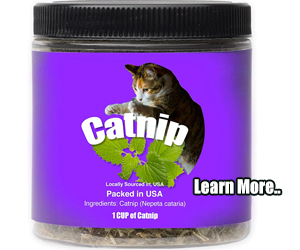Mojave Desert Seasons
The Desert Speaks - TV Series
by Lee Allen
To all things, there is a season. In the Mojave Desert, there are two: very hot and very cold --- and the producers of the acclaimed PBS show, The Desert Speaks, have been there during both. "Expect one end or the other of the temperature range," says producer Tom Kleespie. There may be a halfway, but we haven't seen it yet."

"The extreme differences in seasonality are like a feast of the senses," he says. "We endured a spread of one hundred degrees between one visit in the heat of the summer and a return trip during frigid winter conditions. In the winter, there was no sound or smell because of the blanket of snow. Then to go back and stand in the same location when it was 100 degrees hotter, when you could hear the birds and take in the pungent aroma of creosote, it was the complete polar opposite --- incongruous, if not surrealistic."
The opportunity not only to be there during the height of both seasons, but to have a professional film crew on hand to document it, was a once-in-a-lifetime experience. "They were so lucky to be there," said biologist Christa Shallee of the National Parks Service. "Rarely do we even get a few inches of precipitation each year, even more rarely does it get cold enough to snow."
"I've been shooting desert programs for over 20 years," says Dan Duncan, award-winning videographer for the TV show. "We were jazzed and running on adrenalin when we saw the snow. Shooting in that kind of weather is the most miserable thing you can do to your equipment. It's a pain. It fogs up the lens and half the time you're wiping your viewfinder to even locate an image, but we couldn't stop shooting. This was Devine Province, the right place at the right time."

The Mojave Desert (or Mohave ) has been referred to as 'the orneriest desert of all.' It's an arid region, more than 25,000 square miles of barren mountains and flat valleys once a part of an ancient sea whose topography was formed by volcanic action and material deposited by the Colorado River. The newest and largest national desert preserve is located in the rain shadow of southern California's coastal range where, if plants and animals are lucky, they'll get five inches of rainfall annually. It's also one of the most photographed deserts in the world and the home of the world's largest Joshua tree forest with 1.6 million-acres protected in Mojave National Preserve.
"Mojave is different from lots of other deserts because there's such a diversity of habitats," says cameraman Duncan. "Sand dunes in one section, creosote flats, salt-encrusted playas, lava fields, Joshua tree forests and underground environments like Mitchell Caverns. It's a plethora of habitat forms very close together and easy to sample in a short period of time."

"Get your kicks on Route 66," sings program host David Yetman. "This is a historic roadway, the main artery connecting east and west. When this road opened, millions of people passed through. It was a busy place in the 1930s with broken down Model T's all along the way and families stuck, wondering how they were going to get to the Promised Land. They were already in California, but they thought they'd ended up in hell."
The hell of the desert floor itself yields to lesser evils as the altitude climbs with a cross section of all variations in the Mojave Preserve. "In the lowland valleys, you get fine-grained soil, sparse rainfall and hotter temperatures. Bursage is a dominant survivor," says Yar Petryszyn, a museum curator at the University of Arizona. While cactus is predominant in the soil along bajadas, the desert hosts about 200 endemic plant species. "As elevation increases, you see snake weed, rabbit brush, turpentine bush and different yuccas, dominated by the Joshua tree." These 'trees' are really banana yuccas, named such because their seed pods are shaped like the fruit. They were once an important food resource for indigenous people who also used the fiber to weave into mats and rope.
"Continue higher, where there is more rainfall and cooler temperatures, and you get into forests of pinon pine," he says. Fellow U of A scientist Peter Kresan, a geologist, notes that the Mojave Desert was not always as dry and desolate as it is today. "It took about 10,000 years, at the end of the Ice Age," he says, "when flowing streams actually delivered water into Death Valley. Today those former shorelines are marked by cane and salt grasses in places like Soda Lake, a typical playa where evaporation left the white salts that extend across the lake bottom." To the uninitiated who don't believe in things like Wet Paint signs and have to find out for themselves just how salty the sodium bicarbonate really is, remember that this is magnesium sulfate, Epsom salts, a very effective laxative.

In the Mojave, you can drive from salt flats to sand dunes to ancient volcanoes. "This is a real snapshot in time where the heat of ancient lava flow baked the desert floor into the brick red, orange, and yellow colors you seen today," says Kresan. Periodically travelers will find something that looks like a smokestack of cinders from the Cima volcanic field welded together into relatively hard rock. "These are basically self-made stacks of loose cinders that would erupt like fireworks. It must have been spectacular at night when they were forming."
The starkness would be even more so were it not for wind-blown sand and dust from the surrounding dry lake beds that cover the lava flow and provide soil for vegetation to take hold. "Without it, this place would really be barren," says Yetman, "as stark as the moon." The plants that have managed to survive have adapted ways of coping with the heat. Creosote leaves are covered with a resinous oil that bounces off sunlight. The holly leaf salt bush produces silvery hairs that reflect light and cool the plant down. Desert thorn drops its leaves and becomes a mere spine to avoid losing moisture until conditions are right and the leaves come back.
Crewmembers of the TV show refer to a Mojave Desert visit, be it in snow or under sweltering sun, as a trip in a time machine. "There's a mystique to following the old Route 66 roadway and taking a huge step back into history," says Kleespie. "You go to playas that thousands of years ago were lakes. You stand on top of what was once, a million years ago, boiling hot with liquid lava. It gives you a sense of what the earth was like back when."

"It amazes me when we travel in our heated or air-conditioned vehicles on paved highways through the deserts of what it must have been like for early explorers across the same landscape without those amenities," says Duncan. "You look out on the horizon at the elements, in real time, and have to acknowledge that it's a harsh, but fragile, world all in the same package."
Related DesertUSA Pages
- How to Turn Your Smartphone into a Survival Tool
- 26 Tips for Surviving in the Desert
- Death by GPS
- 7 Smartphone Apps to Improve Your Camping Experience
- Maps Parks and More
- Desert Survival Skills
- How to Keep Ice Cold in the Desert
- Desert Rocks, Minerals & Geology Index
- Preparing an Emergency Survival Kit
Share this page on Facebook:
The Desert Environment
The North American Deserts
Desert Geological Terms



